Whisky Rocks: Exploring Their Purpose and Impact
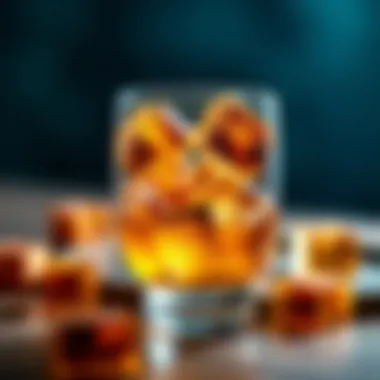
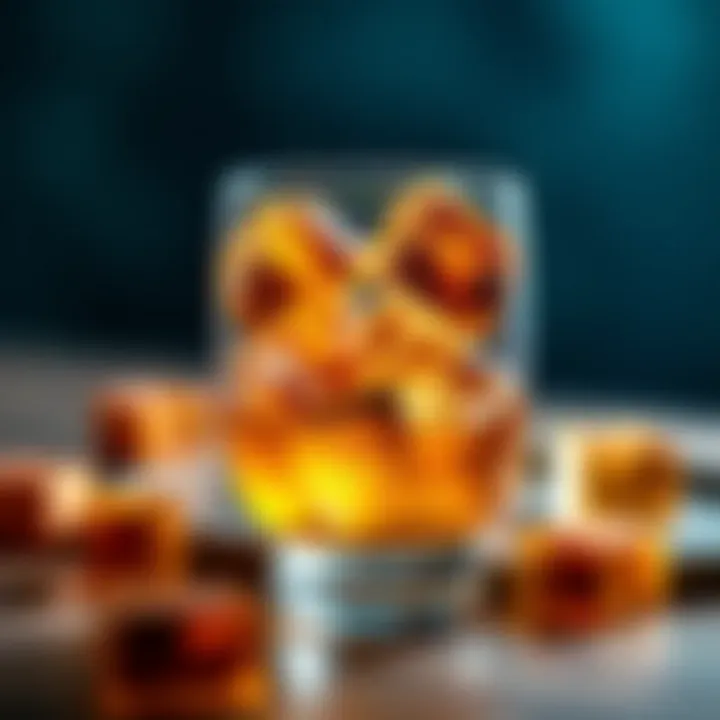
Intro
Whisky enthusiasts often find themselves at a crossroads when it comes to chilling their favorite spirit: should they use traditional ice or something else? Enter whisky rocks, a novel solution that's been gaining traction among connoisseurs. These solid stones have risen in popularity due to their unique properties, which allow for a delightful sipping experience without the dilution that comes from melting ice. Understanding the world of whisky rocks can elevate your appreciation for whisky, making it not only a matter of taste but also a matter of texture, temperature, and tradition.
The allure of whisky rocks lies in their ability to cool your drink while preserving the integrity of flavors and aromas. This method has sparked an exploration of various materials, shapes, and designs, each serving a distinct purpose for the whisky lover. In this article, we will dissect this subject, examining their role in enhancing the drinking experience, discerning the differences between whisky rocks and traditional ice, and offering best practices for their use. With that, let’s embark on this comprehensive discussion of whisky rocks, tapping into both the science and the art of whisky enjoyment.
Understanding Whisky Rocks
Whisky rocks serve as more than mere accessories in the realm of whisky enjoyment; they are pivotal in enhancing the way enthusiasts experience their favorite spirits. The vital knowledge surrounding whisky rocks not only heightens the drinking experience but also transforms a simple act into a refined ritual. Understanding why whisky rocks have gained favor among whisky lovers lays the foundation for a deeper appreciation of their qualities and benefits.
Definition of Whisky Rocks
So, what exactly are whisky rocks? At their core, whisky rocks are solid stones, typically made from materials like soapstone or granite, designed to chill beverages without diluting them. Unlike traditional ice cubes that melt and mix with the drink, whisky rocks maintain the integrity of the whisky's flavor profile. Their purpose is straightforward yet impactful: to bring the drink to a pleasantly cool temperature without compromising its taste.
Five types of materials are common in the manufacture of whisky rocks, each offering distinct characteristics that influence performance:
- Soapstone: Soft and heat-retaining, making it ideal for gradual chilling.
- Granite: Durable with an appealing aesthetic, offering longer cooling power.
- Stainless Steel: Fast-acting in temperature reduction, often used for its sleek and modern design.
- Glass: A less common choice, yet visually stunning, though it may not hold temperature as well.
- Ceramic: Sometimes used for its unique look but can be heavy.
Knowing the definition of whisky rocks helps in understanding how they fit into the enjoyment of whisky, allowing aficionados to elevate their ritual without the drawbacks of melting ice.
History of Whisky Rocks
The history of whisky rocks is a tale of evolving preferences among connoisseurs. Glassware has long been the pride of whisky drinkers, but the advent of whisky rocks came about as knowledge of the nuances in whisky flavors grew. Over time, enthusiasts sought ways to savor their spirits without dilution, hence the rise of the rocks.
While the exact origins remain somewhat murky, anecdotal evidence suggests that the idea sprung from the traditions of scotch whisky drinkers in Scotland, where the climate can call for a chilled drink, yet the purity of taste is paramount. Early implementations utilized natural stones found in the environment, which were then replaced by more refined materials as production methods developed. Today, whisky rocks can be found in a myriad of designs, appealing to the aesthetic appreciation of whisky culture. It’s interesting to note how this shift reflects larger trends towards both customization and quality in the beverage industry.
Purpose of Using Whisky Rocks
Using whisky rocks serves a variety of purposes that collectively enhance the drinking experience. Here's a breakdown of the primary functions they fulfill:
- Taste Preservation: As mentioned, whisky rocks provide cooling without adulterating the drink's flavor, making them the favored choice among those who want to enjoy the spirit as intended.
- Convenience: They are easy to use—just chill the rocks in the freezer and toss them into your whisky glass, skipping the wait time typically associated with cooling down a drink.
- Aesthetic Appeal: Whisky rocks bring a certain elegance to the drinking experience. The unique shapes and materials often spark conversation among users, highlighting the artisanal aspect of whisky culture.
- Environmental Impact: For those conscious about waste, whisky rocks are a sustainable solution. By eliminating the need for single-use ice, they present a more environmentally friendly choice.
Materials Used in Whisky Rocks
Selecting the right materials for whisky rocks plays a crucial role in the efficiency of cooling your drink without diluting it. Each type of material brings its unique qualities to the table, influencing thermal properties and user experience. As whisky enthusiasts seek out ways to elevate their tasting experiences, understanding the nuances of these materials becomes essential for making informed choices.
Soapstone Whisky Rocks
Soapstone is a soft and remarkably good thermal conductor. It's often known for its natural beauty and ability to hold temperature well, making it an excellent choice for whisky rocks. When you chill soapstone rocks, they become quite good at absorbing cold and will hold that chill for a significant time. However, one of the significant advantages is that they do not impart any flavors into the whisky. Some whisky drinkers might be sensitive to even slight changes in flavor; thus, soapstone is often a favored option in such cases.
Additionally, soapstone's smooth surface can give a pleasant tactile experience as you sip your drink. On the downside, it can be relatively fragile. If dropped, it might chip or crack, which may not sit well with some users.
Granite Whisky Rocks
Granite whisky rocks are often lauded for their durability and aesthetic appeal. Granite is a tough material and can withstand a lot of wear and tear. When chilled, granite is effective at keeping drinks cool. It tends to have a higher density than some other stones, which can mean it can keep your drink chilly a tad longer. Moreover, granite comes in various colors and finishes, adding to the visual charm every time you pour a drink.
However, akin to soapstone, granite rocks are known to have a slight tendency to impart a low level of earthy taste. This isn’t a dealbreaker for many, but it is worth considering for those who appreciate the purity of their whisky experience.
Stainless Steel Whisky Rocks
Stainless steel whisky rocks have gained popularity in recent years due to their resilience and ease of maintenance. These rocks can be frozen quickly, allowing for immediate use. They are non-porous, which means that they won't absorb flavors or odors. This characteristic is particularly appealing to whisky aficionados who desire a clean tasting experience without any unwanted influences.
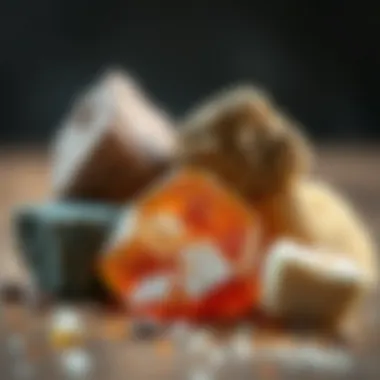
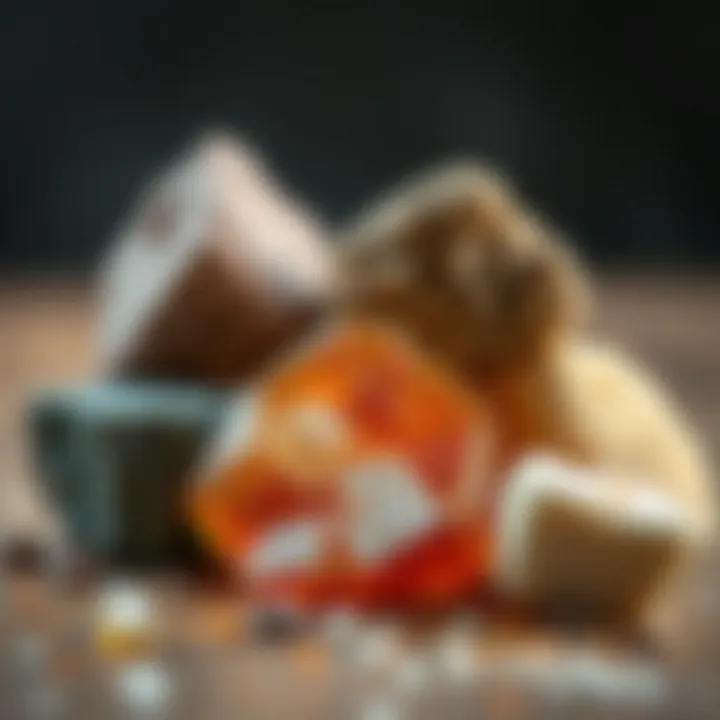
Another bonus is their dishwasher safe nature, which simplifies the cleaning process. However, some find that stainless steel rocks don’t maintain cold temperatures for as long as stone options. This aspect relies on several factors, such as the initial temperature of the drink and the overall thermal mass of the rocks.
Other Materials
While soapstone, granite, and stainless steel are the most common materials used for whisky rocks, there are other options worth mentioning. For example, some companies have experimented with materials like glass or even specially designed polymers that simulate the most favorable characteristics of traditional stones. Here's a quick overview of these alternatives:
- Glass Rocks: They offer a sophisticated look but can be fragile.
- Ceramic Rocks: Generally heavier and they can sometimes break upon high impact.
- Polymer Variants: Designed to mimic the cooling capabilities of stones, these might appeal more to those seeking something innovative.
Ultimately, the choice of material for whisky rocks boils down to personal preference and priorities in the drinking experience.
"The magic of whisky rocks lies not just in their functionality but also in the personal touch they add to the ritual of relaxation and enjoyment."
As you can see, understanding the materials used in whisky rocks is just as much about functionality as it is about personal experience. Finding the right match for your individual taste can elevate the enjoyment of your whisky significantly.
Effects of Whisky Rocks on Temperature
Understanding how whisky rocks affect temperature is key for anyone serious about their whisky experience. The use of whisky rocks strikes a delicate balance; they keep your dram at a pleasant sipping temperature without diluting the rich flavors that true enthusiasts cherish. The ability to maintain the perfect temperature makes them not just a trendy accessory, but a thoughtful addition to the ritual of enjoyment.
Temperature Maintenance
Whisky rocks are designed specifically to elevate the experience of sipping whisky rather than muddle its wonderful profile with melting ice. When you drop these little stones into your whisky glass, they fit snugly and start absorbing the heat from the liquid. The science behind it holds true: materials like soapstone or granite boast excellent thermal conductivity, allowing them to keep your drink cool.
Unlike ice, which waters down your drink and alters its intended taste, whisky rocks cool your drams while maintaining full flavor integrity. After chilling them in the freezer for a couple of hours—a process that, quite honestly, requires little more than you remembering to pop them in beforehand—you can enjoy your whisky at the optimal temperature.
- Freezing Method: Place the whisky rocks in the freezer for at least four hours before use.
- Best Usage: For optimal results, use two to three rocks per glass.
- Cooling Efficiency: They usually lower the temperature of whisky by about 5 to 10 degrees Fahrenheit, keeping it refreshing without the watery aftertaste.
Impact on Flavors
Another part of the charm of using whisky rocks is their unique impact on the flavors of your dram. When you sip your whisky that has been cooled appropriately with rocks, you’re savoring its essence in its intended state rather than a diluted version. This is critical because whisky’s flavor profiles are sensitive to temperature changes. High temperatures can enhance certain esters, which might overpower the more delicate notes of your whisky. On the other hand, lower temperatures often highlight the subtler characteristics without overpowering them.
- Nose and Palate Interaction: Cooler whisky can offer a balance that allows various notes to emerge in a more harmonious blend, enhancing the overall experience.
- Complexity Revelations: When whisky is too warm, those complex aromas can be muted, making it harder to appreciate the craftsmanship behind each pour.
- Flavor Longevity: Serving whisky at cooler temperatures can extend the duration of the tasting experience, letting you appreciate each sip for longer, rather than rushing through unfathomable layers just to avoid a warm, unappealing glass.
To sum it up, whisky rocks stand as an underappreciated yet essential tool in ensuring that your whisky remains as the distiller intended: a perfect marriage of temperature and flavor. With just a small touch of commonsense in preparation, you can enjoy every bottle with utmost pride and integrity.
Whisky Rocks vs. Ice
When it comes to enjoying your whisky, the choice between whisky rocks and traditional ice can ignite quite the discussion. Each option carries its own set of qualities, advantages, and considerations that appeal differently to enthusiasts. Understanding how these two methods impact your drinking experience is critical for any whisky lover looking to elevate their appreciation.
Pros and Cons of Whisky Rocks
Whisky rocks, typically made from materials like soapstone or stainless steel, have surged in popularity as a substitute for ice. However, they come with their own unique pros and cons.
Pros:
- Temperature Control: Whisky rocks chill your drink without melting, ensuring that the whisky maintains its intended flavor profile.
- Flavor Preservation: By avoiding dilution, the nuances and complexity of the whisky are kept intact, allowing a true tasting experience.
- Reusable: Unlike ice, which is single-use, whisky rocks can be reused numerous times, making them environmentally friendly and cost-effective in the long run.
Cons:
- Cooling Time: Whisky rocks generally require pre-chilling for optimal performance. This means you have to think ahead a bit longer than just grabbing ice from the freezer.
- Temperature Limitations: While they keep your drink cool, whisky rocks may not achieve the same level of chill that ice can offer, especially for those who enjoy a super-cold beverage.
- Potential for a Stone Flavor: Some users report a subtle taste transfer from certain types of stones, which may affect the overall drinking experience depending on personal preference.
Traditional Ice: Benefits and Drawbacks
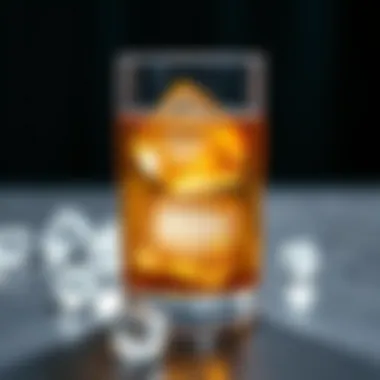
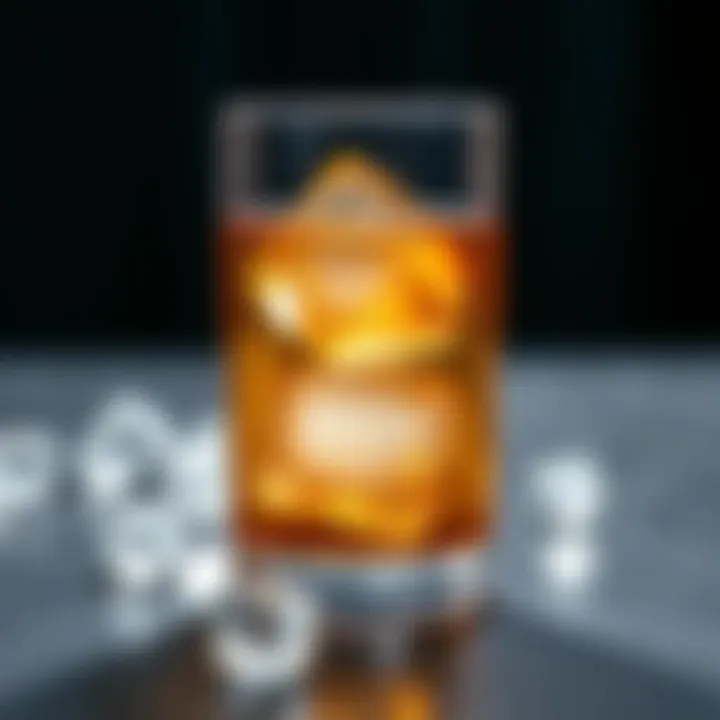
Ice has long been the traditional companion for a range of drinks, and whisky is no exception. Yet, it's not without its share of ups and downs.
Benefits:
- Instant Chill: Ice provides immediate cooling, perfect for those who want to dive straight into their drink without waiting.
- Versatility: Easily accessible and adaptable, ice can be used in virtually any drink, from cocktails to soft drinks.
- Melting Effect: For some, the gradual dilution from melting ice adds an enjoyable dynamic to the taste, unlocking different flavors.
Drawbacks:
- Dilution: As ice melts, it inevitably waters down the drink, which can mask the intricate flavors of a good whisky.
- Messy: Ice can lead to a watery mess if not properly managed, and the potential for unwanted spills adds an element of inconvenience.
Flavor Preservation Comparison
The core difference between whisky rocks and ice lies in how they affect the flavor of your drink. Whisky rocks maintain a consistent temperature without altering the drink's composition.
- Whisky Rocks:
- Ice:
- Keeps the drink’s character intact without altering the alcohol content.
- Preserves the unique aromas, allowing the drinker to experience the whisky in its purest form.
- Filters the flavor as it melts, leading to a gradual change that may appeal to some but not all.
- This can sometimes introduce coldness that masks subtle flavors, as the whisky becomes increasingly diluted.
Understanding the balance between maintaining the integrity of your whisky and enjoying a refreshing drink is where the choice between whisky rocks and ice truly lies. Whether you prefer the traditional method or the modern approach, both serve unique purposes that cater to distinct preferences in the whisky community.
"Ultimately, the best choice between whisky rocks and ice boils down to personal taste and the experience you're after. Both have merits and pitfalls, but knowing what suits your palate will enhance your whisky journey."
Links for further exploration:
Aesthetics and Experience
When one sips on whisky, it’s not merely about taste—it's about the entire sensory experience. The aesthetics surrounding whisky rocks play a vital role in elevating this experience to something memorable. Whisky rocks serve as both a functional element and an aesthetic piece that complements the overall whisky-drinking ritual. Here, we delve into how these rocks enhance the beauty of whisky while marrying it with tradition and sophistication.
Visual Appeal of Whisky Rocks
Whisky rocks come in various designs and materials, each exuding its own charm.
- Soapstone whisky rocks are often characterized by their smooth surface and subtle color variations, giving them an organic feel that can fit seamlessly into any bar setup.
- Granite stones, on the other hand, offer a more rugged appearance, appealing to those who appreciate a raw, unrefined aesthetic.
- Stainless steel, being sleek and shiny, lends a modern angle, adding a pop of contemporary flair. This variation allows enthusiasts to choose rocks that resonate with their personal style.
The visual appeal of these stones is not just for show. The eye-catching appearance can spark conversations among peers, making for a more engaging social experience. After all, sharing a drink is as much about the company and ambiance as it is about the liquid in your glass. Whisky rocks can thus become conversation starters, leading to discussions about their origins, uses, and personal preferences.
In terms of function, the beauty of whisky rocks is that they maintain a clean aesthetic without diluting the drink. Unlike traditional ice cubes, which melt into the fluid, creating a frosty dilution, whisky rocks chill the beverage without altering its character. This preserves the whisky's rich color, allowing the drinker to appreciate both the look and the flavors authentically.
Cultural Perceptions
Culturally, whisky rocks embody savoir-faire in whisky appreciation. In many spirits-loving societies, the use of whisky rocks signals a level of sophistication among enthusiasts. The rocks can be seen as a bridge between casual enjoyment and formal tasting, effectively addressing the nuances of whisky drinking from a cultural standpoint.
Across different regions, the symbols of whisky rocks may vary. In some circles, the act of using whisky rocks signifies an appreciation for heritage and craftsmanship. In others, it might represent a shift toward modernization and a more pragmatic approach to enjoyment—prioritizing flavor integrity over temperature. Understanding these cultural layers enriches the experience and highlights the diverse ways whisky can be enjoyed.
"The pleasures of whisky extend beyond taste; they invite us into a world where every facet matters—appearance, tradition, and the stories we share around it."
Whether one delights in the aesthetic quality of whisky rocks or acknowledges their role within cultural narratives, it’s crystal clear that they contribute significantly to the overall whisky experience. The combination of visual allure with a legacy of tradition encapsulates what whisky enthusiasts cherish deeply.


Choosing the Right Whisky Rocks
Selecting the perfect whisky rocks is crucial in enhancing the overall whisky experience. Not all stones are created equal, and the choice can profoundly affect how you enjoy your drink. Different materials, shapes, and sizes come into play when picking whisky rocks. Understanding these factors enables enthusiasts to tailor their drinking experience to their preferences, making each sip enjoyable and full of flavor. Without proper consideration, one might miss out on the full potential of their favorite whisky.
Factors to Consider
When choosing whisky rocks, several factors come into play that can influence their performance and your enjoyment:
- Material: The most crucial factor is the material. Soapstone is a popular choice due to its excellent thermal properties. However, some may prefer stainless steel for its durability. Whatever you pick, the material will impact heat retention and cooling efficiency.
- Shape and Size: Whisky rocks come in various shapes and sizes. Cubes are the classic choice, but spherical or irregular shapes can also be found. Smaller rocks may chill faster but may not retain temperature for long, while larger rocks tend to stay cold longer.
- Weight: The heft of the rocks also matters. Heavier stones may cool your drink more effectively, but they sometimes require more storage space.
- Brand: Some brands are known for their quality and reliability. Be sure to check reviews and recommendations to find a reputable manufacturer.
Ultimately, the right whisky rocks should complement your whisky-drinking habits and enhance your experience.
Recommended Brands
While personal preference plays a significant role, certain brands stand out due to their craftsmanship and customer satisfaction. Here are a few worth considering:
- Whisky Stones: Known for their reliable soapstone rocks, this brand has gained a loyal following.
- Teroforma: Offers both soapstone and stainless steel options, catering to every kind of whisky aficionado. Their stones are highly rated for performance and quality.
- Cool Stones: While focused on aesthetics, they also offer solid cooling performance with attractive designs.
- Vacu Vin: Their stainless steel whisky rocks can chill drinks quickly and keep them cold longer.
When you choose whisky rocks from trustworthy brands, you generally receive quality. Do your research, read reviews, and perhaps try a few types before settling into a favorite.
"The perfect whisky stone is more than just a cooling agent; it’s an essential part of the whisky experience. Choose wisely and sip slow."
For further information on material properties and historical contexts, you can explore resources at Wikipedia or Britannica.
Buying the right whisky rocks is a balance of quality, functionality, and personal preference. Take the time to find what works best for you – your whisky deserves it!
Best Practices for Using Whisky Rocks
When it comes to enjoying whisky, every detail matters—from the glass you choose to how you chill your drink. Whisky rocks have emerged as a popular method for chilling whisky without diluting its flavors. Using them correctly can enhance your experience significantly, so let's dig into the best practices for using whisky rocks effectively.
Preparation and Usage
Before you even reach for that bottle, some preparation is key. First off, ensure your whisky rocks are clean and ready to go. Most rocks need to chill in the freezer for at least four hours before use. This timeframe allows them to absorb enough cold to keep your drink cooler for longer.
- Choose the Right Amount: How many rocks should you use? Typically, three to four rocks can work wonders, providing a balance between chilling and room for your whisky. Remember, the idea here is to keep the integrity of the whisky while still enjoying a refreshing sip.
- Timing Matters: Once the rocks have been in the freezer long enough, it's time to pour your whisky. Giving the rocks a gentle rinse before using can help maintain cleanliness. Place the rocks in your glass before adding the whisky. This pre-chilling may prevent the whisky from warming up too quickly once poured.
- Savor the Moment: Whisky is about enjoyment, and patience pays off. After pouring, allow the whisky to mingle with the rocks for a few moments. This time lets the spirits cool down gently while maintaining its complex flavors.
Cleaning and Maintenance
Maintaining your whisky rocks isn't just about hygiene; it's essential for getting the fullest flavor from your beverages. Here’s how to keep them in tip-top shape:
- Simple Cleaning Process: Most whisky rocks are made of materials like soapstone, granite, or metal that can be cleaned easily. After use, simply rinse the rocks under warm water. If needed, a gentle scrub using mild soap will do the trick. This way, you keep any transferred flavors or residue at bay.
- Drying Time: After washing, make sure to let the rocks air dry completely before placing them back in the freezer. Moisture can freeze on the rocks and dilute your drink before you even get the chance to enjoy it.
- Smart Storage: Store the clean rocks in a breathable cloth bag or a designated container. This protects them from any dust or unwanted aromas while stored, ensuring that every time you use them, they’ve got nothing but the purest chill to offer.
When you follow these best practices, whisky rocks can elevate your drinking experience remarkably. As whisky enthusiasts know, it’s often the little things that make a big difference. So, with clean rocks ready and proper chilling techniques in place, prepare to sip, savor, and enjoy each moment you've set aside for whisky.
Epilogue
In looking back at the exploration of whisky rocks, we must recognize their significance not just as mere accessories but as key elements that enhance the whisky drinking experience. Whisky rocks serve a unique purpose: they chill the spirit without diluting it, preserving the intricate flavors and aromas that fine whisky offers. For enthusiasts, understanding this practice can fundamentally change how they perceive and enjoy their drink.
The advantages of using whisky rocks extend far beyond the initial chill. Their materials—whether soapstone, granite, or stainless steel—all have unique properties, influencing how long they hold temperature and the essence they preserve within the glass. This nuanced understanding can elevate one's appreciation for whisky, prompting a more mindful sipping experience.
Considerations surrounding whisky rocks also include their aesthetic appeal. Their visual aura contributes to the overall presentation of a whisky pour. This is important for both social settings and solitary enjoyment, as the ambience matters in the unfolding of the whisky experience. A glass filled with gently glistening rocks not only looks elegant but enhances the narrative of the drink itself.
Ultimately, as whisky enthusiasts delve into the options that whisky rocks present, it becomes clear that understanding these elements fosters a deeper connection with the spirit. Embracing this knowledge means there’s more insight into selecting the right whisky rocks and how best to employ them.
So, whether you’re a newcomer to whisky or a seasoned aficionado, integrating whisky rocks can complicate or complement your flavor profile—potentially altering your approach to savoring whisky. Overall, the conclusion drawn from this exploration underscores the timeless motto: to each their own. Individuals will find their preferences; however, whisky rocks offer a fascinating avenue to enhance personal taste and experience in a sophisticated yet accessible manner.
The art of whisky appreciation is as rich and varied as the flavors in each bottle, and knowing how to maintain that integrity is half the journey.
For further reading, explore resources like Wikipedia's whisky page or the discussion forums on Reddit for diverse perspectives and engaging conversations about whisky rocks and all that encompasses them.







